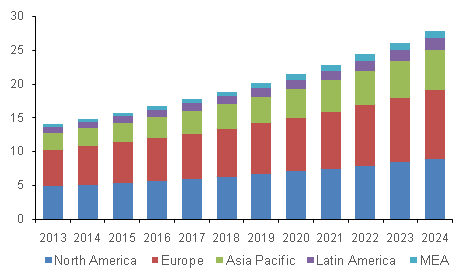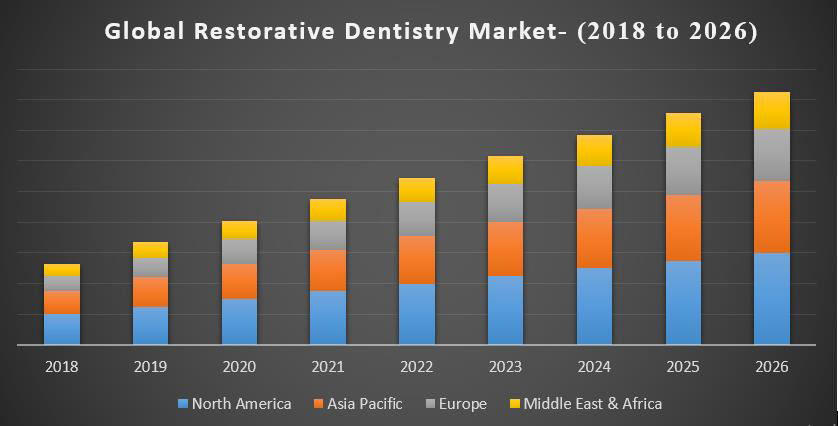Market Analysis - (2019) Volume 5, Issue 2
Published: 30-Jun-2019
Oral surgery experts like pediatric dentists, endodontists, orthodontists, periodontists, and oral surgeons are consistently the highest earning oral surgeon’s specialists while periodontitis are the lowest earning oral surgeon’s specialists.

Among the five specialist types studied during this transient, orthodontists have all-time low self-reported busyness levels while oral surgeons have the highest self-reported busyness levels.
Among the five specialist varieties studied in this brief, a greater percentage of pediatric dentists work in oral surgeon’s service organization (DSO) affiliated practices where as a lower share of periodontists work in DSO affiliated practices.

Oral and maxillofacial surgery is considered as private segment treatment in Italy, as just 4% of oral surgeons care is given inside the NHS. As indicated by a recent report (Servizio Studi ANDI) in view of ISTAT information, 39.7% Italians visited a oral surgeons specialist at any rate once per year, contrasted with 11.5% who never went by. Private oral surgeons’ consumption was evaluated in 2013 to be about €10 billion. It has been assessed that Oral surgeon’s administrations in Italy are given through a system of 56,000 oral surgeons’ practitioners and business research centers are dynamic, with 11,520 oral surgeons’ professionals working either as proprietors or representatives. In Italy, most oral surgeons’ practitioners who hone all alone or as little gatherings, outside healing centers or schools, and give an expansive scope of general medications are said to be in "Private Practice”. It additionally gives the opportunity to analysts, experts and instructors to introduce and talk about the latest advancements, patterns, and concerns, reasonable difficulties encountered and the solutions adopted in the fields of Oral Health & Maxillofacial Surgery.
Market Scenario:
The ADTA report clearly suggests that staff shifts and changes will force the design and construction of new practice/organizational models that have "insurgent" staffing concepts and dynamic cultures - if the dentist is willing to embrace the full spectrum of provider choices! With the rapid technological advancement, wide range of Oral and Maxillofacial Pathology techniques, and increase in the need of pathology automation. The oral pathology global market is expected to have a healthy growth rate in the forecast period (2012-2025).Oral health is essential to general health and quality of life. From past few years, the oral surgeons market is relatively stable, with substantial growth in restorative CADCAM dentistry. National oral surgeons care expenditures were $113.5 billion in 2014, somewhat up from $112 billion in 2013 (in inflation-adjusted 2014 dollars) but roughly considered the same level. The global oral care/oral hygiene market is projected to reach USD 53.97 Billion by 2022 from USD 43.31 Billion in 2017, at a CAGR of 4.5%. The major players in the global oral care market are Colgate-Palmolive Company (U.S.).
Based upon the ADTA's study, six variables seem to determine provider productivity, quality, and economics all of which influence a practice's sustainability. These variables range from strategic to operational:
i. Range of services
ii. Scope of capacity
iii. Staffing mix/format
iv. Access/convenience
v. Capital resources
vi. Fee and expense mix
The oral and maxillofacial pathology consumables market is expected to witness significant growth in the coming years. Factors such as the rapid rise in geriatric population, growing tourism in emerging markets, rising incidences of dental caries and other periodontal diseases, growing disposable incomes (resulting in increased willingness to spend out-of-pocket), rising demand for cosmetic dentistry, and increasing dental care expenditure are the major factors driving the growth of the global dental consumables market. The global dental consumables market is projected to reach USD 35.35 Billion by 2021 from USD 25.45 Billion in 2016, at a CAGR of 6.8% from 2016 to 2021. However the high cost and limited reimbursement for dental care and shortage of dental professionals are expected to restrain the growth of this market to certain extent.
Today, the most common practice model in oral surgeons care is the standard solo practice with three-plus operators’ and a lean clinical-support staff. The smaller general-practice model generates roughly $225,000 to $300,000 in gross billings. Gross of large general practices ranges between $475,000 and $550,000. Mid-range operations gross between $350,000 and $425,000.
General expenses in this traditional model typically run from a low of 50 to 55 percent to a high of 65 to 70 percent. The norm is 60 to 65 percent.
Canada: The Dentists business displayed slight development over the five years to 2017 because of increments in persistent appearances and private area spending on dental administrations. As dental workplaces get expanded financing through the private division, industry administrators depend on less on open protection repayments, profiting industry income. With per capita extra cash developing amid the period, dental practices have needed to secure fewer repayments from medical coverage suppliers contrasted and the general medicinal services area. Over the five years to 2022, the expanding elderly populace will change socioeconomics in Canada and, subsequently, goad interest for helpful, corrective, periodontal and orthodontic care, boosting industry income.
USA: The U.S. Oral surgeons Practice industry has proven to be quite resilient throughout the economic recession, having registered positive revenue growth each year from 2002 to 2010. In 2010, U.S. oral surgeon’s practices recorded a collective $107.6 billion in revenue, up 1.8 percent from the prior year, driven primarily by continued favorable demographic trends, improvements in technology, and heightened consumer awareness of the importance of oral hygiene to overall health. Industry revenue is forecast to reach $130.0 billion by 2016, representing a compound annual growth rate (CAGR) of 3.2 percent from 2010 to 2016. The market for oral pathology is growing steadily. It is expected to reach approximately USD 22 billion by the end of 2022.
Europe: Europe is likely to be the largest market for oral surgeon’s laboratories in terms of revenue during the forecast period. However, Asia Pacific is anticipated to outperform Europe from 2015 to 2023. The European oral surgeon’s equipment market was estimated at USD 1.6 billion in 2014 and is projected to reach USD 2.40 billion by 2020 at a CAGR of 7 % during the forecast period from 2014 to 2020.
Asia Pacific: Asia-Pacific oral surgeon’s equipment market was estimated at USD 2.4 billion in 2016 and is projected to reach USD 3.8 billion by 2021 at a CAGR of 9 % during the forecast period from 2016 to 2021.
Oral Health Case Reports received 120 citations as per Google Scholar report